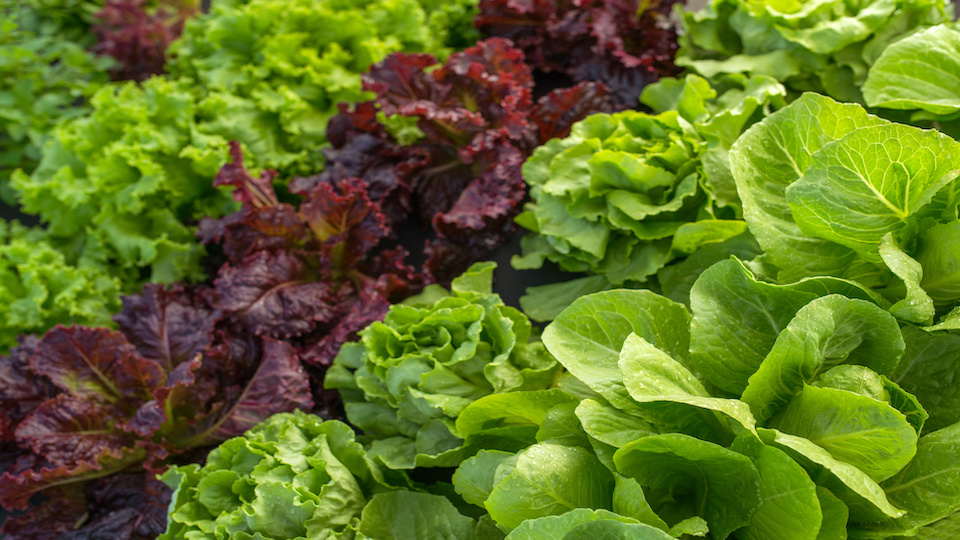Most vegetables need plenty of sun to flourish. Corn, tomatoes, peppers, cucumbers, squash, beans and peas are sun lovers, and you need to grow them in full sun for bumper crops. However, there are a number of vegetables that do better with a bit of shade, especially during the hotter parts of the day.
As a general rule, vegetables grown for their fruit have the highest demand for light, followed by root vegetables. Leafy vegetables and herbs can do with even less light. In fact, many of them not only thrive in partial shade but taste better. These are ideal for gardeners who worry that their backyard doesn’t get enough sunlight.
Even when you have a sunny backyard, there are several advantages to growing these vegetables in partial shade.
Keeps them soft and tender
Many vegetables grown for their roots and stems remain soft and tender when grown in partial shade. Carrot, parsnip, beet, turnip, rhubarb, scallions, asparagus, kohlrabi, cabbage, and Brussels sprouts all are typical examples. It’s particularly true for lettuces and other salad greens which tend to become bitter at the approach of warmer weather. That’s why shade nets are often used for their commercial cultivation. They remain sweet when grown this way.
Prevents premature bolting/flowering
Vegetables that need more sunlight will grow slower in shade and take longer to mature. Many leafy vegetables such as spinach, arugula, celery, bok choy, and cabbage and herbs such as dill and cilantro respond to heat and drought by bolting prematurely.
Herbs, especially basil, are best before they start flowering. Growing them in shade slows down their maturation process, so you will be able to take full advantage of these crops.
Helps cut down water
Plants need more water in sunlight due to the increased rate of photosynthesis and temperature regulatio. That’s why those growing in partial shade require much less water compared to those exposed to full sun.
If the shade is due to an overhead canopy of trees or taller plants nearby, water loss due to transpiration is further reduced because of the overall humidity in the area.
Avoids repeated wilting
Leafy vegetables and even tomato and potato plants often suffer from repeated wilting at midday or in the afternoon. This can happen even when there’s plenty of moisture in the soil. The higher rate of photosynthesis increases the demand for water in the leaves, which also drives up the rate of transpiration. This is in addition to the drying effect of the sun’s heat.
Repeated wilting makes plants weak and susceptible to infections, especially fungal diseases. It also causes flower and fruit drop.
Reduces fertilizer requirement
Vegetables are generally heavy feeders, and it’s especially true for those exposed to full sun. Photosynthesis increases mineral requirements, so you’ll need to feed them regularly and frequently
Those in shade might be able to manage with less frequent feeding. If you’re using good quality compost, they may not even need any additional inputs.
Extends harvesting period
Tomatoes, cucumbers, and peppers are sun-loving vegetables, but it’s a great idea to plant some in partial shade to extend their harvest. You can avoid seasonal glut this way, and continue to have smaller amounts for a much longer time. You shouldn’t expect the same output from shade-grown plants, though.
Cool-season crops such as broccoli, cabbage, cauliflower, and collards usually go into decline as the warm season approaches, but you might be able to enjoy them for some more time if they’re growing in cool shade. The same is true for leeks and scallions.
If your garden is exposed to full sun throughout the day, you can still grow these vegetables in partial shade. All it takes is a little planning, with the heights of plants as well as the location of your garden taken into consideration.
Ideal sun exposure for root vegetables: Carrots, beets, radishes, and other root vegetables need half a day of sun to thrive, but they’ll be more tender and sweet if they get partial shade or dappled sunlight during the afternoon. A tall overhead tree with an open canopy works well. It provides light shade in summer, while bare branches in fall and winter allow more sun.
Ideal exposure for leafy vegetables and herbs: Leafy veggies and herbs need no more than 3-4 hours of direct sunlight, preferably only morning light. When planted close to short trees or rows of tall plants, they would not only get enough protection from direct sun, but also benefit from the extra humidity.
During summer in the Northern Hemisphere, sunlight comes from the northeast direction in the morning and from northwest in the afternoon. In other words, sun keeps to the northern side of the house at all times. If your garden happens to be on that side, it gets maximum exposure all through the day.
Even plants that do well in shade love the gentle rays of the morning sun. However, a large tree with a light canopy and a thick hedge on the northwest could shield them from the harsh sun in the afternoon. Another option is to plant rows of corn or pole beans on trellises, with beds of root vegetables and greens between them.
-The Alternative Daily




